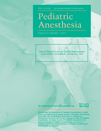Striving for a zero-error patient surgical journey through adoption of aviation-style challenge and response flow checklists: a quality improvement project
Summary
Aims
We describe our aim to create a zero-error system in our pediatric ambulatory surgery center by employing effective teamwork and aviation-style challenge and response ‘flow checklists’ at key stages of the patient surgical journey. These are used in addition to the existing World Health Organization Surgical Safety Checklists (Ann Surg, 255, 2012 and 44).
Background
Bellevue Surgery Center is a freestanding ambulatory surgery center affiliated with Seattle Children's Hospital, WA, USA. Approximately three thousand ambulatory surgeries are performed each year across a variety of surgical disciplines.
Methods
Key points in the patient surgical journey were identified as high risk (different time points from the WHO safer surgery checklists). These were moments when the team, patient, and equipment have to been reconfigured to maximize patient safety. These points were departure from induction room, arrival in the operating room, departure from operating room, and arrival in the postanesthesia care unit. Traditionally, the anesthesiologist has memorized a list of ‘do-not-forget items’ for each of these stages. We recognized the potential for error to occur if the process was solely the responsibility of one individual and their memory. So we created ‘flow checklists’ executed by the team at every one of these high-risk points. We adopted a challenge and response system for these flow checklists as this is a tried and tested system widely used in aviation for critical tasks such as configuring an aircraft pretakeoff and prelanding.
Results
A staff survey with a 72% response rate (n = 29) showed that the team valued the checklists and thought they contributed to patient safety. To date, we have had zero incidence of omitting any of the 24 items listed on the four flow checklists.
Conclusions
We have created a reproducible model of care involving multiple checklists at high-risk points in the patient surgical journey. The model is reliable and has a high degree of staff engagement. It promotes patient safety by ensuring the patient, team and equipment are correctly configured at every key transition stage in the surgical journey. We have been able to achieve this with no measurable increase in turnover times or reduction in operating room efficiency.




